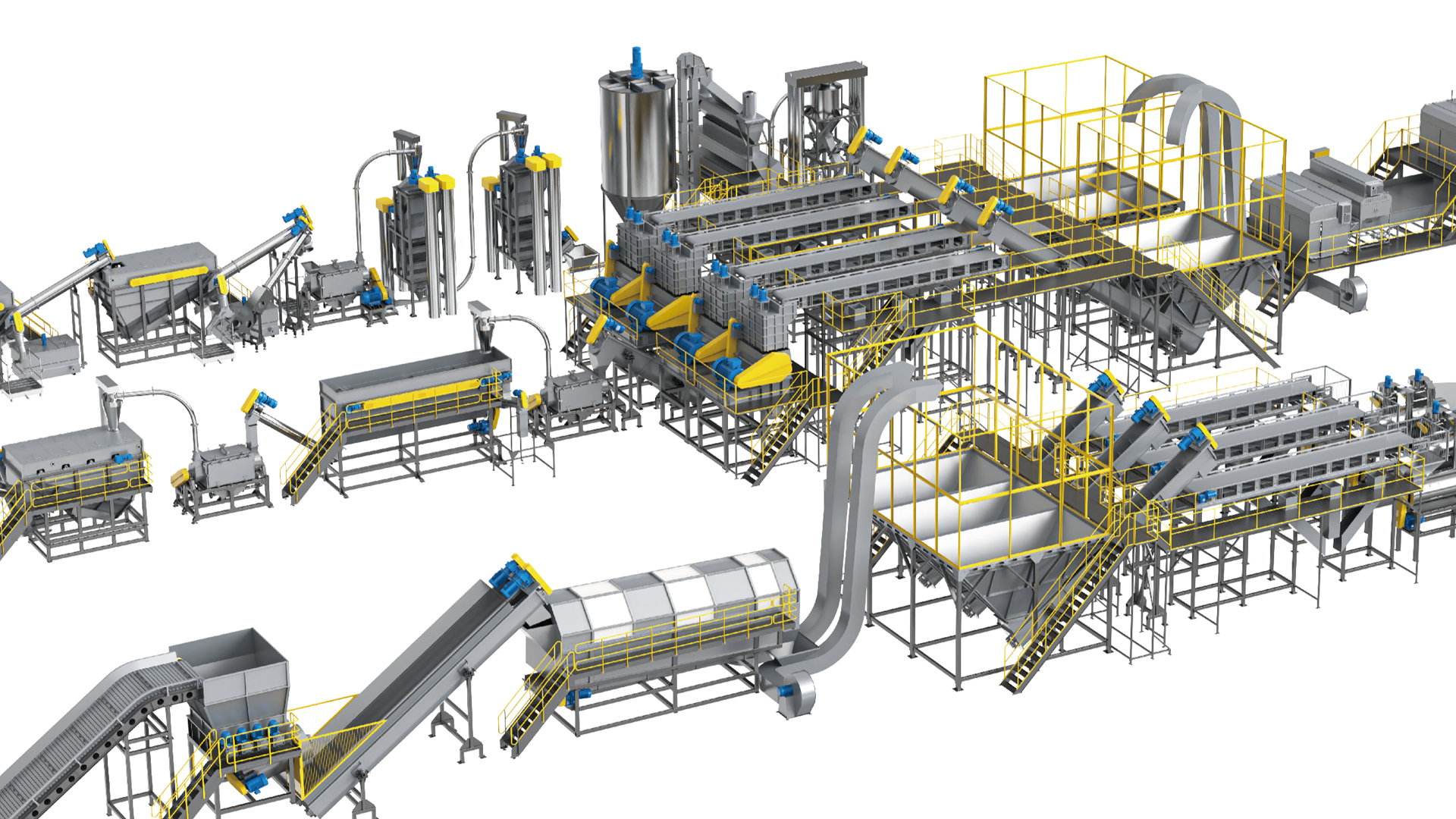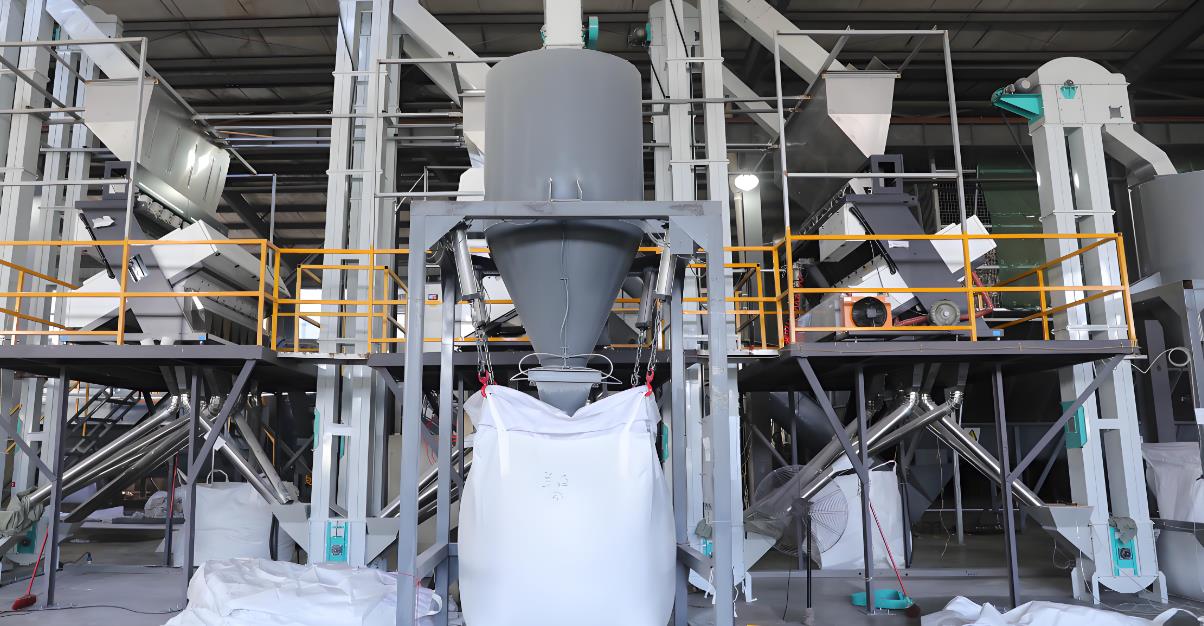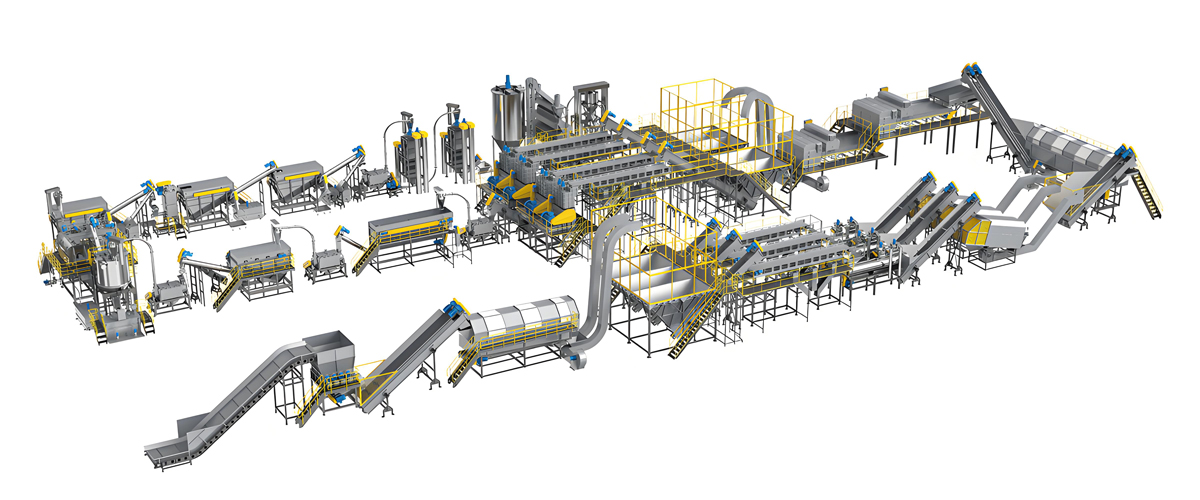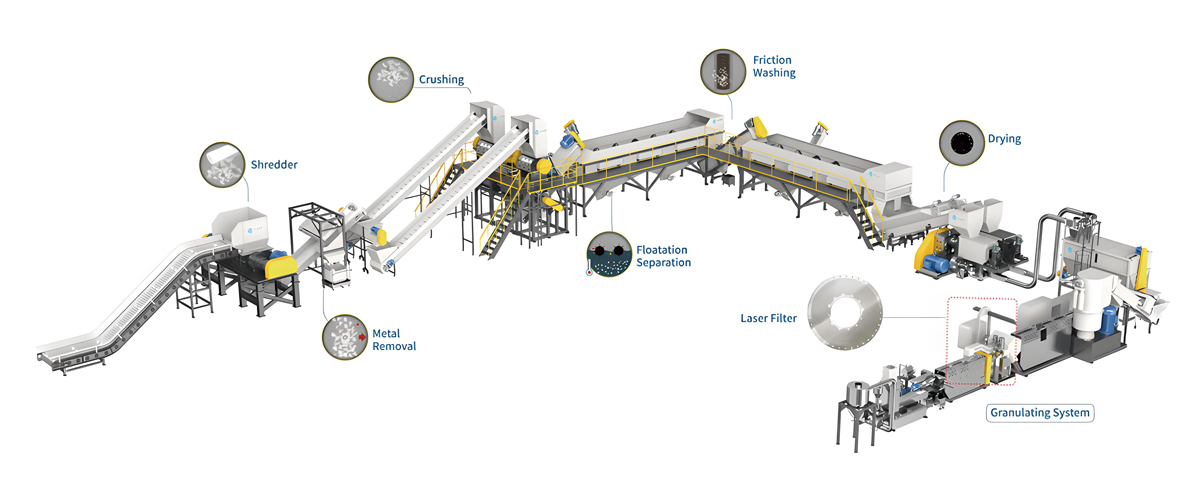Plastic recycling machine is a specialized mechanical equipment used for recycling and processing waste plastics. Its classification can be carried out from multiple perspectives. The following is a detailed explanation of the classification of plastic recycling machines.
1. Classified by the type of recycled plastic
Universal plastic recycling machine
This type of recycling machine is mainly used to recycle four common plastics such as polyethylene (PE), polypropylene (PP), polyvinyl chloride (PVC), and polystyrene (PS). For example, common products in daily life such as plastic films, plastic bottles, and plastic pipes are mainly composed of these universal plastics. The recycling machine processes these plastics into plastic pellets through specific processes such as crushing, cleaning, melt extrusion, etc., in order to be used again to manufacture new plastic products.
Engineering plastic recycling machine
Used for recycling engineering plastics such as polyamide (PA, commonly known as nylon), polycarbonate (PC), polyoxymethylene (POM), etc. These engineering plastics have excellent properties such as high strength, toughness, and wear resistance, and are commonly used in fields such as automobiles, electronics, and machinery. When processing these plastics, the engineering plastic recycling machine requires more refined processes because the composition of engineering plastics is complex, and the performance requirements for the recycled materials are also higher. For example, when recycling polycarbonate plastic, it is necessary to strictly control the temperature and shear force during the recycling process to avoid plastic degradation and affect its performance.
2. Classified by working principle
Extrusion plastic recycling machine
This is the most common type of plastic recycling machine. When working, first crush the waste plastic into smaller plastic fragments. Then, by rotating the screw, the plastic fragments are transported to the heating zone and melted at high temperatures. Finally, the molten plastic is extruded through an extrusion head and cooled to form plastic particles. The advantages of this recycling machine are high production efficiency, continuous production, and the ability to produce plastic products of different shapes and sizes, such as plastic pipes, plastic sheets, etc., by replacing different molds.
Injection molding plastic recycling machine
It is mainly used to process recycled plastics into plastic products with specific shapes. After pre-treatment, waste plastics are heated and melted, and then injected into the mold cavity through the screw of the injection molding machine. After cooling and solidification, plastic products are obtained. The injection molding plastic recycling machine requires high precision for the mold, as it directly determines the shape and dimensional accuracy of the plastic products. For example, when manufacturing plastic toys or car parts, high-precision molds are needed to ensure product quality.
Thermal decomposition plastic recycling machine
This recycling machine operates based on the principle of pyrolysis. It heats waste plastics to high temperatures under anaerobic or hypoxic conditions, causing the large molecular chains of the plastics to break and decompose into small hydrocarbon compounds or synthetic gas. These decomposition products can be further processed and utilized, such as for the production of fuel oil or chemical raw materials. The advantage of a pyrolysis type plastic recycling machine is that it can process mixed plastics that are difficult to recycle through traditional methods or heavily polluted plastics. However, the disadvantage is that the equipment is complex, the investment cost is high, and the pyrolysis process requires precise control of parameters such as temperature and pressure.
3. Classified by degree of automation
Fully automatic plastic recycling machine
Highly automated operational processes. Almost all processes from feeding, crushing, cleaning, drying, melting and extrusion of waste plastics to particle forming can be automatically completed through pre-set programs. It is equipped with advanced sensors and control systems, which can automatically monitor and adjust parameters of various links, such as temperature, pressure, speed, etc. This recycling machine is suitable for large-scale plastic recycling factories, which can improve production efficiency and reduce labor costs, but the equipment price is relatively high.
Semi automatic plastic recycling machine
Some operational steps require manual intervention. For example, during the feeding process, it may be necessary to manually place waste plastics at the feeding port, or to manually collect and package plastic particles after molding. However, its core recycling process, such as crushing and melting, is still controlled by automation. The semi-automatic plastic recycling machine has a relatively low price and is suitable for small and medium-sized plastic recycling enterprises or situations where automation requirements are not particularly high.
Manual plastic recycling machine
The operation of this recycling machine mainly relies on manual labor. Usually small and simple devices, such as manual plastic crushers. The operator needs to manually put the waste plastic into the crusher for crushing, and then carry out subsequent processing of the crushed plastic, such as cleaning, drying, and sending it to a specialized recycling factory for melting and processing. The manual plastic recycling machine is simple and inexpensive, but its production efficiency is low and the labor intensity is high.
The classification of plastic recycling machines can be approached from multiple perspectives. When choosing, users should comprehensively consider factors such as their actual needs, processing objects, technical requirements, and budget, and choose the most suitable plastic recycling machine for themselves.







